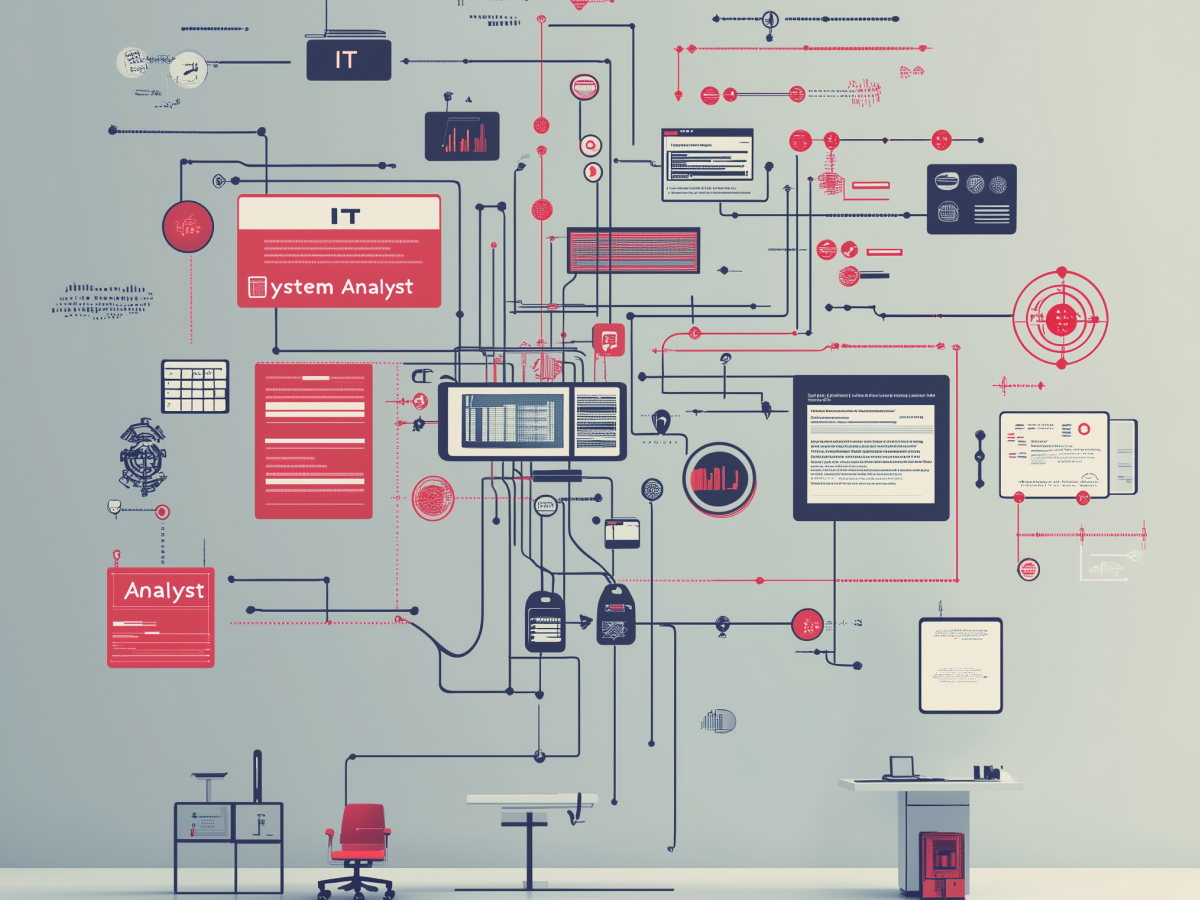Automating QA increases software reliability without compromising stability
We’re in a phase where speed and scale matter. But scaling software without breaking it? That’s a real test. Automating quality assurance (QA) gives you the ability to run more tests, faster, and with better consistency. That translates into earlier issue detection and fewer customer-impacting failures. But here’s the critical thing: automation alone doesn’t create stability. It’s depends on how you integrate it.
Automated QA has to align precisely with your reliability goals. If the processes aren’t stable underneath, you’re just speeding up the failure curve. For leadership, this means building systems where tests run around the clock, flag issues early, and don’t collapse when a new feature is pushed out. Bringing automation into QA helps create software that keeps up with the pace of your company without turning fragile.
Executives need to treat automation not as a “one-and-done” solution, but as infrastructure. Like power and bandwidth, something continuously engineered and optimized. Automation shouldn’t replace human reasoning in QA, but it should extend the team’s reach. When reliability is on autopilot, teams can spend more time engineering value instead of firefighting preventable bugs.
Automation streamlines QA processes, delivering faster testing and consistent release schedules
Speed matters when you’re building at scale. Customers expect faster updates, and your roadmap doesn’t wait for manual test cycles to catch up. Automated QA removes the drag from release timelines. Instead of waiting days for full regression tests, you can have results in minutes, or even in real time.
When you automate repetitive and high-frequency tests, your team reclaims time. You don’t want your developers derailed running the same test suite over and over. What actually drives progress is making sure those brains are focused on building features, refining performance, and moving the product forward. Faster, smarter QA processes get you to market quicker, and with a lot less risk.
The release lifecycle becomes a lot more predictable once automated QA is in place. That predictability is a competitive edge. If your competitors are stuck delaying new features to resolve last-minute bugs, and your teams aren’t, you win on timing and trust. Executives should also understand that while automation cuts testing time, it also reduces last-minute chaos. Things don’t break as often when you’ve tested them continuously. Releasing is calmer. Roadmaps stay on track.
Scalability of QA automation supports business growth
Growth adds complexity. More users, more data, more features, all of it increases the pressure on your engineering teams to maintain reliability without slowing down. When quality assurance is automated and built to scale, you don’t need to constantly hire more people just to keep testing coverage intact.
Automated QA allows your test coverage to expand with your product. Whether you’re pushing multiple updates per week or onboarding larger enterprises with customized configurations, automated systems can handle it without needing to re-architect your entire QA pipeline. This helps you support scale without sacrificing confidence in the product.
From an executive perspective, it’s critical to make sure your QA automation strategy isn’t static. As your business scales across regions, sectors, or platforms, your testing architecture should evolve to handle new use cases—and integrate across growing teams and toolsets.
Long-term cost-efficiency through reusable automated tests
The upfront cost of automating QA is noticeable. Engineering hours go into building frameworks, defining test suites, and integrating continuous testing environments. But once the system is in place, the cost of running each test drops sharply. These tests don’t need breaks, don’t forget steps, and don’t introduce variability. They run as often as you need them to—accurately, and with immediate feedback.
Reusable tests become a core asset. Each test written today saves time on every future sprint, release, and bugfix cycle. This continuous payback lowers long-term QA costs and helps your product scale without proportionally expanding your QA team. Executives looking at product lifetime value and operational efficiency should understand this compounding effect.
ROI from QA automation shows up in reduced test cycles and fewer bugs. It impacts engineering morale, customer satisfaction, and even product security. Automated testing reinforces a development culture that’s proactive, solving problems before they emerge. If you’re chasing sustainable growth without bloated overhead, these systems aren’t optional. They’re foundational.
Not every QA test benefits equally
Automation works best when it’s applied with precision. Not every quality assurance test deserves to be automated. Some aren’t repeatable enough. Others require human reasoning or subjective evaluation that automation can’t replicate. If you automate the wrong kind of test, you risk false confidence, believing something works when it doesn’t.
The decision to automate should be based on the value it delivers: frequency, reliability, and execution speed. Tests that consistently behave the same way and run in high volumes are strong candidates. On the other hand, tests that validate usability or visual integrity often need human input. Applying automation wisely avoids wasted time and builds a more dependable software pipeline.
For leaders funding automation initiatives, it’s important to avoid the trap of “automating everything.” That’s expensive and counterproductive. Instead, prioritize automation where it amplifies signal and reduces manual load. Let your engineering leaders define a threshold for what gets automated, what stays manual, and what eventually transitions. That kind of clarity saves cost and protects your software from brittle, overengineered testing systems.
Unit testing is an ideal candidate for automation
Unit tests are designed to check isolated pieces of code, functions, logic branches, or components, independently. They’re consistent by nature and can be executed quickly. That makes them ideal for automation. Once in place, they give developers real-time feedback when something breaks and keep regressions in check from one release to the next.
Effective unit testing at scale drives performance across product teams. Developers can push updates with more confidence because failures are caught early, right at the code level. Over time, automated unit tests reduce the need for late-stage debugging, improve release velocity, and create a more stable software foundation for iterative growth.
For executives, investing in unit test automation is a strategic asset, especially when paired with continuous integration and deployment systems. But coverage alone doesn’t deliver quality. Tests need to reflect real business logic and edge case behavior. That means engineering leaders must spend time reviewing test relevance, not just volume. When unit testing is treated as a capability, not a checkbox, it accelerates development without undermining product integrity.
Integration testing benefits from automation to assess module interactions
Once your teams move beyond isolated code and begin stitching components together, integration testing becomes essential. These tests verify how individual modules talk to each other, and whether those connections create unintended issues. Automating integration testing ensures those validations happen consistently and quickly, especially when systems grow in complexity.
With real-time insights into how parts of the codebase interact, automated integration tests reduce the chances of cascading failures. This protects both performance and user experience as you push frequent changes. For products moving at pace, automation in this layer adds resilience to your architecture and helps teams deploy with confidence.
Integration problems are among the hardest to catch during manual testing because they often appear in unpredictable ways. As an executive, enabling automated integration testing should be viewed as an investment in long-term product health. The value comes from eliminating the gaps where errors typically form when systems evolve. This is particularly critical when managing distributed teams or working across multiple APIs and services.
System testing can use automation to validate overall system functionality
System testing evaluates how the entire application performs under expected conditions. This includes functional tests, smoke tests, and regression checks. Automating these tests allows your teams to continuously monitor the behavior of the entire software system, not just individual components, before releasing updates or new features.
Full-system automated tests give you visibility over whether builds are stable, especially after substantial updates. Instead of waiting until staging or post-deployment feedback, your team can identify performance shifts, regressions, or broken user flows as soon as changes are introduced. This minimizes risk and accelerates delivery cycles.
Executives should be careful not to confuse system-level automation with exhaustive validation. These tests are effective at catching high-level failures but don’t always reveal deeper design or architectural issues. Teams should pair system test automation with meaningful benchmarking and production monitoring. That dual approach makes system testing automation a strong contributor to uptime, reliability, and continuous innovation—all without manual bottlenecks.
Certain aspects of user acceptance testing can be automated to gauge end-user impact
User Acceptance Testing (UAT) confirms whether a product meets user expectations before it reaches production. Most of this process involves subjective feedback, how real people use the application in real environments. But several test types within UAT, like A/B testing, load testing, and performance testing, can be automated to evaluate system behavior under varying user conditions.
Automating these UAT components can help your team validate that critical features respond reliably at scale. It also provides measurable feedback on user-facing performance, driving decisions around feature rollouts or user segmentation. This doesn’t eliminate the need for live validation, but it does offer fast, actionable insights when launching changes to a global audience.
From a leadership view, UAT automation should be tightly integrated with product feedback loops. Executives managing growth at scale should push for UAT data to include both quantitative (automated) and qualitative (human) sources. Especially for customer-facing software, combining performance thresholds with user sentiment helps avoid friction that damages retention. The right balance supports fast iteration while maintaining experience consistency.
Isolating automated tests improves test reliability and error identification
An automated test that depends on the state or success of others is unreliable. When tests are built to run independently, it becomes clearer which parts of the system fail and why. You can identify the problem without rerunning complex test sequences or combing through scripts trying to reproduce a failure cascade.
Test isolation also improves maintainability. As the codebase evolves, isolated tests are easier to update and verify against specific changes. This speeds up test execution and lowers debugging times during failure events. It’s a foundation for QA automation that works under pressure and maintains its value over time.
Executives should recognize that modular, isolated testing isn’t just a best practice, it’s a risk control mechanism. In testing environments with many dependencies or integration points, test isolation ensures that one unexpected failure doesn’t compromise the whole process. This enables stability even as your engineering velocity increases. If an automation system can’t maintain test reliability at scale, then it becomes part of the problem instead of the solution.
Focusing automation on in-house controlled parameters improves actionability
Automated QA delivers the most value when it targets systems and components your team directly controls. Running automated tests on external services or third-party integrations can surface issues, but they’re rarely actionable. Your team can’t fix a failing third-party API. What you can control is how your service interacts with it, or what failsafes are in place when it goes down.
Focusing test coverage on internally owned code and systems allows your engineers to respond quickly when something breaks. You avoid spending time investigating problems that are ultimately outside your domain. It keeps your QA effort lean, focused, and impactful.
For executives operating complex tech stacks with multiple external dependencies, it’s important to frame automation as a strategic tool—not just a technical one. Prioritize automation where your team can drive immediate improvements. Surface external failures with monitoring, but don’t dilute your automation strategy chasing what you can’t control. Clear boundaries tend to produce faster fixes and lower operational overhead.
Clear definition of testing parameters and outcomes underpins successful QA automation
Without clearly defined parameters, automated tests are just code running code. To extract meaningful results, each test must be anchored by a clear objective, what it’s testing, under what conditions, and what defines a pass or failure. This clarity ensures that your tests stay aligned with product goals, and it prevents engineers from debugging irrelevant or misleading failures.
Defining testing criteria upfront avoids wasted cycles. It also makes your automation systems easier to maintain over time. As your software evolves, having clearly documented expectations helps teams decide what to update, remove, or expand. This discipline keeps your QA pipeline predictable and efficient.
For executives, vague or outdated testing objectives often lead to misaligned priorities, longer release timelines, and unnecessary firefighting. Ensure your teams have a process in place to regularly validate that their tests are still relevant to today’s product behaviors. The ability to define and revise test outcomes with precision directly supports product velocity and quality—without overengineering the automation layer.
Prioritizing end-user focus in QA testing increases overall product value
Every decision in QA should reflect how the software impacts the end user. Automated tests shouldn’t carry assumptions about what matters, they should be set up to measure what affects performance, usability, and consistency from the user’s perspective. This includes responsiveness, error handling, and real-world data handling under variable loads.
Engineering teams can sometimes optimize for technical outcomes while missing product-level friction that users immediately experience. Automated testing, when focused on the end-user journey, gives product and engineering leaders visibility into what actually matters post-deployment. Features that pass internal checks but fail once in the hands of users offer no business value.
For executives, aligning automation with user outcome metrics, not just unit-level correctness, creates stronger feedback loops from development to delivery. It helps prevent misalignment between technical success and product adoption. To improve retention, growth, and customer satisfaction, ensure your automation strategy is integrated with user experience benchmarks and live usage data. This keeps teams focused on building what works, not just what passes.
Regular reassessment of QA automation procedures is key for ongoing relevance and effectiveness
Automated tests are only valuable as long as they reflect the current state of your software. When systems evolve, through new features, architecture changes, or performance shifts—tests must be reviewed and updated. Otherwise, they become technical debt: outdated scripts that either pass when they shouldn’t or fail without providing value.
Reassessing your QA structure on a regular schedule prevents reliance on ineffective checks. It also highlights opportunities for new automations based on emerging patterns across systems or customer feedback. This responsiveness turns your QA automation system into a living framework, built to adapt at the same pace as your product.
For executives, automated QA is a strategic capability. But left unmaintained, it slows innovation instead of supporting it. Build in governance and review cycles where engineering leads audit automated test suites. Remove redundant scripts, refactor tests tied to deprecated features, and measure test performance over time. That’s how you move from simply having automation to consistently benefiting from it.
The bottom line
Fast growth without stability is failure dressed up as momentum. Automation in QA can be an operational shift. It impacts how fast you ship, how often you break, and how confidently your teams move. Done well, it adds reliability that scales with your product and keeps quality tightly aligned to customer expectations.
Executives should push for automation strategies that improve lead time, reduce repetitive labor, and flag failure before it hits the user. The payoff will be stronger roadmaps, steadier operations, and software that moves as fast as your market does.
Invest in automation with intent. Reassess what’s working. Keep it focused. And make sure every piece of it is driving outcomes your business actually cares about. That’s how you turn QA into a growth enabler, not just a cost center.





